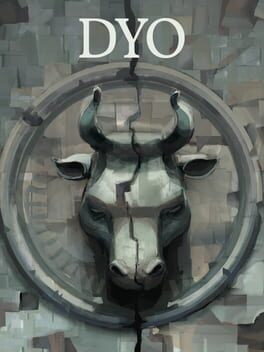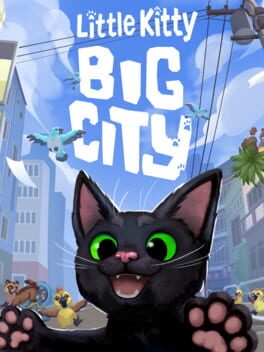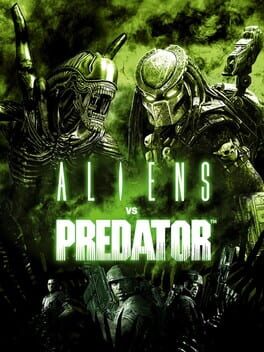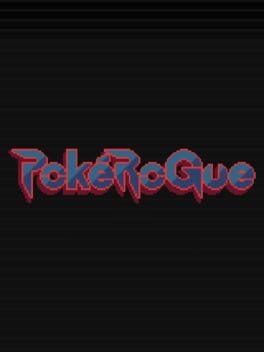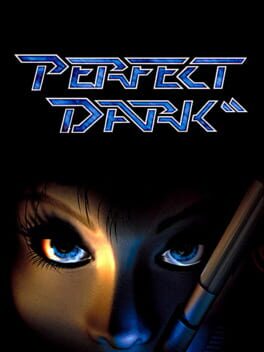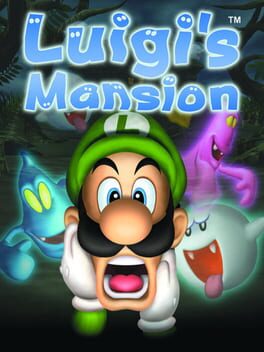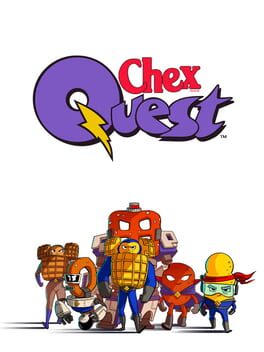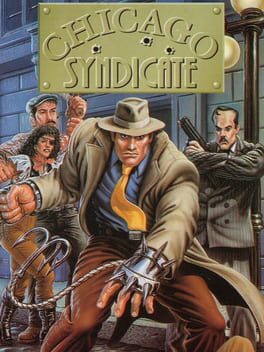TGA_backloggd
123 Reviews liked by TGA_backloggd
Dyo
2018
Note - as I did not beat the game, this write-up should be taken more as a set of observations than a genuine review.
Dyo is a free puzzle game on Steam, its appeal deriving as much from that price point as its co-op premise - you and buddy controlling one of two minotaurs in an attempt to reach the doorway(s) within each level. How fun is it? Well, given that I had to abandon it in light of the high difficulty curve, I’m going to say it wasn’t for me, though that doesn’t mean it won’t have its fans.
Occupying the platformer genre, Dyo’s gimmick rests on each player being able to attach their screen-halves together at any point in time, theoretically yielding all manner of makeshift jigsaws for obstacle circumvention. It works well at first; however, the complexity grows greatly the second the devs start adding new variables into the mix: perspective shifts, dissolving blocks, and moveable cubes being among the best offenders. Now normally I welcome these kinds of changes, but the problem is Dyo doesn’t go about organically-introducing them the way it did with its initial gimmick, resulting in players being thrown into the deep end without much warning.
Luckily, everything is unduly responsive and bug-free, rendering the excursion very smooth and responsive irregardless of my qualms.
Visually, Dyo is on the minimalist side, though that actually works in the game’s favor due to its shorthand nature- your two characters resemble the beasts of Ancient Greek fame, their brighter hues contrasting well with the cinereal props of standing columns and stitched-together brick. Backdrops further compliment this set-up by hosting innumerable items like wavering flames, looming columns, and well-honed sculptures. Yes, you will see a lot of repetition; however, the restrained stylization does serve its purpose of establishing a labyrinthine atmosphere.
SFX is reserved solely for select actions (locking-in screens, pushing blocks, and entering doors), while music, as far as I got anyway, consisted of a singular ambient track hemorrhaged by creepy wind & drum motifs. Both are fine given the brief length of levels, though Dyo probably could’ve benefited from some symphonic diversity as things progressed.
Ultimately, though, this is a title that’ll only appeal to the patient as finding those aforementioned harder solutions does get taxing the deeper you go. If you and a buddy are willing to do that, then Dyo should be a fun enough afternoon.
Dyo is a free puzzle game on Steam, its appeal deriving as much from that price point as its co-op premise - you and buddy controlling one of two minotaurs in an attempt to reach the doorway(s) within each level. How fun is it? Well, given that I had to abandon it in light of the high difficulty curve, I’m going to say it wasn’t for me, though that doesn’t mean it won’t have its fans.
Occupying the platformer genre, Dyo’s gimmick rests on each player being able to attach their screen-halves together at any point in time, theoretically yielding all manner of makeshift jigsaws for obstacle circumvention. It works well at first; however, the complexity grows greatly the second the devs start adding new variables into the mix: perspective shifts, dissolving blocks, and moveable cubes being among the best offenders. Now normally I welcome these kinds of changes, but the problem is Dyo doesn’t go about organically-introducing them the way it did with its initial gimmick, resulting in players being thrown into the deep end without much warning.
Luckily, everything is unduly responsive and bug-free, rendering the excursion very smooth and responsive irregardless of my qualms.
Visually, Dyo is on the minimalist side, though that actually works in the game’s favor due to its shorthand nature- your two characters resemble the beasts of Ancient Greek fame, their brighter hues contrasting well with the cinereal props of standing columns and stitched-together brick. Backdrops further compliment this set-up by hosting innumerable items like wavering flames, looming columns, and well-honed sculptures. Yes, you will see a lot of repetition; however, the restrained stylization does serve its purpose of establishing a labyrinthine atmosphere.
SFX is reserved solely for select actions (locking-in screens, pushing blocks, and entering doors), while music, as far as I got anyway, consisted of a singular ambient track hemorrhaged by creepy wind & drum motifs. Both are fine given the brief length of levels, though Dyo probably could’ve benefited from some symphonic diversity as things progressed.
Ultimately, though, this is a title that’ll only appeal to the patient as finding those aforementioned harder solutions does get taxing the deeper you go. If you and a buddy are willing to do that, then Dyo should be a fun enough afternoon.
Aliens vs. Predator
2010
i'd give it 3 to 4 stars originally, but it gets 5 stars cause of how important this game is to me. as a lil kid this was a huge hyperfixation of mine, discovering that you can play as a xenomorph (they need to make another game where you can be an alien btw) was so exciting. I never played the human / predator campaigns cause i only cared about xeno. very nauseating & all over the place gameplay, but i didn't care, it's worth it, I only wish it was longer.
Aliens vs. Predator
2010
PokéRogue
2024
Perfect Dark
2000
Everything people remember Goldeneye for being, Perfect Dark actually is. There's an intriguing mix of cyberpunk and X-Files alien espionage in the story, and the weapons are a lot of fun to use. The sound and music are excellent. Between this game and Banjo Tooie, Grant Kirkhope had a career defining year in 2000. Graphically, this pushes the Nintendo 64 to its absolute limits, and it shows. Even with the expansion pak, sub 20 FPS is common when there's a lot of action on the screen.
If you can get past that though, this game is feature rich. The campaign is long and engaging, and sadistic in its difficulty when you're playing on harder settings. The campaign can be played in co-op, or you can have up to 4 bots in co-op with you as well. It has a pvp campaign mode as well called counter-operative, where player 2 takes control of an enemy character. Even modern games don't do that. Combine that with a multiplayer mode that can be played with bots or up to four players across multiple different match types, and you have a total package of a game, and about as much fun as you could have with a first-person shooter in 2000. I wouldn't recommend playing this on a Nintendo 64 though. While I'm used to first-person shooter controls on the console, I also grew up with it. I know it's a tall order for most people, especially with those previously mentioned frame rate issues. I would instead point you to the remake Rare did for the Xbox 360 in 2010. That version fixes the frame rate issues and it's also compatible with the Xbox One and the Xbox Series X. If you don't have an Xbox console, some nice people did an unofficial PC port in 2023 that you can play instead. I will link the github at the end of the review for you to download it.
I feel like this game is incredibly slept on, given how much hype Goldeneye gets even now. This is better in every single way than Goldeneye and is the real best console FPS of the era.
Github for the unofficial PC port:
https://github.com/fgsfdsfgs/perfect_dark
If you can get past that though, this game is feature rich. The campaign is long and engaging, and sadistic in its difficulty when you're playing on harder settings. The campaign can be played in co-op, or you can have up to 4 bots in co-op with you as well. It has a pvp campaign mode as well called counter-operative, where player 2 takes control of an enemy character. Even modern games don't do that. Combine that with a multiplayer mode that can be played with bots or up to four players across multiple different match types, and you have a total package of a game, and about as much fun as you could have with a first-person shooter in 2000. I wouldn't recommend playing this on a Nintendo 64 though. While I'm used to first-person shooter controls on the console, I also grew up with it. I know it's a tall order for most people, especially with those previously mentioned frame rate issues. I would instead point you to the remake Rare did for the Xbox 360 in 2010. That version fixes the frame rate issues and it's also compatible with the Xbox One and the Xbox Series X. If you don't have an Xbox console, some nice people did an unofficial PC port in 2023 that you can play instead. I will link the github at the end of the review for you to download it.
I feel like this game is incredibly slept on, given how much hype Goldeneye gets even now. This is better in every single way than Goldeneye and is the real best console FPS of the era.
Github for the unofficial PC port:
https://github.com/fgsfdsfgs/perfect_dark
Perfect Dark
2000
Perfect Dark
2000
Perfect Dark
2000
As I had decided to do a Decade of Gaming 1 (2000-2009) gauntlet, Perfect Dark was my pick for the year 2000.
The game offers an interesting perspective on the earlier days of the First Person shooter genre, Developed by the same studio behind the highly acclaimed GoldenEye 007, it features a similar control scheme, However, I found the control scheme to be awkward and had a hard time getting used to it, which isn’t help by the fact that I have always found playing FPS games with controller hard (Skill issue), but thanks to 1964 GEPD fan patched emulator, I was able to use the mouse and play it like a modern PC FPS.
The story is a sci-fi espionage thriller, filled with conspiracies, alien race wars, and more. While the story itself is fairly straightforward, it is still engaging. The levels are well-designed and easy to navigate, the mission objectives are clear and have detailed description when needed. The gunplay is a lot of fun with a variety of equipment at your disposal, I was very impressed with the enemies’ responsive body parts. You could knock the guns out of their hands, and they even had unique death animations depending on where and how you shot them. The lighting and reflections of this game were very impressive for an N64 title.
Perfect Dark offers a fascinating journey and is definitely worth checking out. The fan patch can be a big help if you're not used to the original control scheme.
Playing older games has always been both insightful and enjoyable to me. So going through Perfect Dark, or any older generation games for that matter truly does put into perspective how far gaming has evolved as a medium, Similar to how watching classic movies or reading older books can enhance your appreciation of the art form, I highly recommend trying older games when possible. This early period of gaming was defined by exciting uncertainty in gameplay and storytelling. Seeing how designers and developers overcame the limitations to create interesting solutions is truly fascinating. These older games have their unique charm and stand out for their own reasons.
The game offers an interesting perspective on the earlier days of the First Person shooter genre, Developed by the same studio behind the highly acclaimed GoldenEye 007, it features a similar control scheme, However, I found the control scheme to be awkward and had a hard time getting used to it, which isn’t help by the fact that I have always found playing FPS games with controller hard (Skill issue), but thanks to 1964 GEPD fan patched emulator, I was able to use the mouse and play it like a modern PC FPS.
The story is a sci-fi espionage thriller, filled with conspiracies, alien race wars, and more. While the story itself is fairly straightforward, it is still engaging. The levels are well-designed and easy to navigate, the mission objectives are clear and have detailed description when needed. The gunplay is a lot of fun with a variety of equipment at your disposal, I was very impressed with the enemies’ responsive body parts. You could knock the guns out of their hands, and they even had unique death animations depending on where and how you shot them. The lighting and reflections of this game were very impressive for an N64 title.
Perfect Dark offers a fascinating journey and is definitely worth checking out. The fan patch can be a big help if you're not used to the original control scheme.
Playing older games has always been both insightful and enjoyable to me. So going through Perfect Dark, or any older generation games for that matter truly does put into perspective how far gaming has evolved as a medium, Similar to how watching classic movies or reading older books can enhance your appreciation of the art form, I highly recommend trying older games when possible. This early period of gaming was defined by exciting uncertainty in gameplay and storytelling. Seeing how designers and developers overcame the limitations to create interesting solutions is truly fascinating. These older games have their unique charm and stand out for their own reasons.
Perfect Dark
2000
One of the greatest shooters ever made. Game was mind blowing back in 2000 pushing the N64 to limits that should not be possible. Mission design absolutely nails the feeling of corporate espionage and mission objectives are far more fleshed out than Goldeneye was. Every weapon having two different firing modes also drastically beefs up your options in the heat of combat. Only downside was needing an expansion pack to play the campaign along with the framerate chugging hard especially if you dare use the n-bomb. Thankfully those last two issues are gone if you play the fantastic decompiled PC port.
Pikmin
2001
The secret behind Pikmin’s success was not that it somehow outclassed classic real-time strategy franchises, but rather that it was never competing with them to begin with. According to Shigeru Miyamoto, he came up with the idea for Pikmin one day when he observed a group of ants carrying leaves together into their nest. Miyamoto then imagined a game focused on cooperation rather than competition; he asked, “Why can’t everyone just move together in the same direction, carrying things as a team?” Nintendo EAD’s design philosophy went along with this line of reasoning, melding design mechanics from different genres to create an entirely new yet familiar experience. As a result, instead of competing against other players in Pikmin akin to classic RTS games, Pikmin forces players to explore and compete with the very environment itself by introducing puzzle-exploration and survival mechanics. It made sense in the end; after all, real-time strategy is concerned with minimizing time spent to get a competitive edge over opponents, and what better way to translate this than to force players to master their understanding over the terrain itself, managing and optimizing the one resource which governs them all?
Perhaps Nintendo’s greatest challenge was figuring out how to translate a genre considered by many to be niche and technical to an intuitive yet layered game, and even more so, translating classic actions from a mouse and keyboard allowing for such complexity to a suite of simplified controls using a gamepad. Coming from the other side as someone who played Starcraft as a kid and didn’t get into Pikmin until recently however, I’m surprised at how well EAD’s tackled this endeavor. Classic RTS games focus upon base-building and resource gathering through the micromanagement of units. Pikmin’s take upon this is to introduce a dichotomy between the player character Captain Olimar, who is incapable of doing anything by himself but can issue commands to the units only he can create by plucking out of the soil, and the Pikmin, who are essentially brainless but represent the units that must do everything. The player as Olimar must be present to figure out exactly how to best traverse and exploit the environment around him (replacing the base-building with management/prioritization puzzles) while the Pikmin provide bodies to construct, move, and attack the world around them. However, the Pikmin’s AI is fairly limited and as a result, Pikmin will sit around helplessly once they finish their actions and often get distracted by nearby objects while moving around, which is where the micromanagement kicks in. Therefore, the player has to decide how to best build up their supply of Pikmin to allocate tasks to surmount bottlenecks while exploring and opening the world, all while working against the limited thirty-day timer throughout the game’s five areas.
A part of me expected to really struggle with the gamepad while playing Pikmin, but the available actions on offer allow for a surprising degree of control despite the simplification. For instance, consider Olimar’s whistle; as a substitute for dragging and clicking to select units on PC, the whistle on the GameCube lets Olimar quickly rally groups of clustered units. Holding down B for longer allows the player to increase the size of the whistle’s AOE, which allows the player to better control and target how many Pikmin to rally in any cluster (hence, the analog of clicking and dragging to select boxes of units on mouse and keyboard). The Swarm command is another interesting translation. The obvious use is to allow Olimar to quickly move nearby Pikmin by directing them with the C-stick versus needing to aim and throw them by positioning and rotating Olimar himself. However, because it can be used to shift the position of Pikmin with respect to Olimar, it can also be used to swap the Pikmin on-deck for throwing (since Olimar will always throw the Pikmin closest to him) without needing to dismiss and re-rally separated Pikmin colors, and most importantly, it allows you to directly control the group of Pikmin following Olimar while moving Olimar himself. This second application allows the player to kite the Pikmin around telegraphed enemy attacks, and properly funnel them so the Pikmin aren’t getting as easily stuck behind walls or falling off ledges/bridges into hazards. That said, noticeable control limitations do exist. Olimar cannot pivot to move the reticle without changing his position with respect to the Pikmin around him, which can make aiming in place annoying if the Pikmin types you need to throw aren’t close enough to be moved next to Olimar with Swarm. Additionally, there is no way for Olimar to simultaneously and directly control multiple separated groups of Pikmin, which does make allocating tasks a bit slower. However, given that the tasks themselves usually don’t necessitate more than one Pikmin type at a time, this limitation is understandable, especially since the sequels would tackle this challenge with more expansive controls and multiple playable characters on the field.
Pikmin’s base model as a result is a fantastic translation of an abstract design philosophy, but I can’t help but wonder if the original could have been pushed further. Don’t misunderstand me: I absolutely take pride in mastering a game by learning all about its inner workings and pushing its mechanics to the limits simply by following a few intuitive genre principles. As such, I wish that the game was a bit harder in order to really force me to squeeze every bit of time from the game’s solid premise. For example, combat is often optional in Pikmin given how many full-grown Bulborbs are found sleeping, but given that most enemies don’t respawn within the next day after killing them and I can bring their carcasses back to base to more than replenish my Pikmin supply, combat is almost always in my favor, especially since certain enemies will spawn more mobs if they aren’t defeated. If circumstances existed where it would be unfavorable to engage (such as losing a significant number of Pikmin every time, or having so little time left that engaging would waste time), then I feel that this would add an additional layer of decision-making of deciding when to sneak past sleeping Bulborbs rather than just wiping out as many foes as I could as soon as possible. In a similar sense, I felt that certain design elements such as the Candypop Buds for switching Pikmin colors were a bit underutilized; outside of one environmental puzzle, I never had to use the Candypop Buds, mainly because I had so many remaining Pikmin and time to never justify their usage. I’ll concede here that Pikmin’s one-day Challenge Mode does at least provide a score attack sandbox where I’m forced to take my Pikmin stock and remaining time into higher consideration, but it’s missing the connectivity of the main story mode where my earlier actions would greatly affect how I planned later days in a run, particularly in making judgement calls on which days to spend at each site and which days I dedicate towards building up my Pikmin numbers versus hauling in ship parts. Regardless, I found myself completing the main game with all parts in just twenty days on my first run with minimal resets, and I’d love to try a harder difficulty mode with a stricter time limit and tougher Pikmin margins to really force me to better conserve my working force and dedicate more time to restocking my supply.
Gripes aside, I’m glad that my friends finally convinced me to try out Pikmin, not just to better appreciate RTS games as a whole but to also gain an appreciation of how different genre mechanics can work in tandem to intuitively convey concepts without spelling everything out to the player. It’s classic Nintendo at their core, and while I had my reservations coming in as a fan of older RTS franchises, they’ve managed to convince me once again that the best hook is not simply offering something that’s visibly better, but rather offering something that’s visibly different. I still think that there’s improvement to be had, but given how much I’ve enjoyed the first game, I can’t wait to see what they have to offer from iterating upon their memorable beginnings.
Perhaps Nintendo’s greatest challenge was figuring out how to translate a genre considered by many to be niche and technical to an intuitive yet layered game, and even more so, translating classic actions from a mouse and keyboard allowing for such complexity to a suite of simplified controls using a gamepad. Coming from the other side as someone who played Starcraft as a kid and didn’t get into Pikmin until recently however, I’m surprised at how well EAD’s tackled this endeavor. Classic RTS games focus upon base-building and resource gathering through the micromanagement of units. Pikmin’s take upon this is to introduce a dichotomy between the player character Captain Olimar, who is incapable of doing anything by himself but can issue commands to the units only he can create by plucking out of the soil, and the Pikmin, who are essentially brainless but represent the units that must do everything. The player as Olimar must be present to figure out exactly how to best traverse and exploit the environment around him (replacing the base-building with management/prioritization puzzles) while the Pikmin provide bodies to construct, move, and attack the world around them. However, the Pikmin’s AI is fairly limited and as a result, Pikmin will sit around helplessly once they finish their actions and often get distracted by nearby objects while moving around, which is where the micromanagement kicks in. Therefore, the player has to decide how to best build up their supply of Pikmin to allocate tasks to surmount bottlenecks while exploring and opening the world, all while working against the limited thirty-day timer throughout the game’s five areas.
A part of me expected to really struggle with the gamepad while playing Pikmin, but the available actions on offer allow for a surprising degree of control despite the simplification. For instance, consider Olimar’s whistle; as a substitute for dragging and clicking to select units on PC, the whistle on the GameCube lets Olimar quickly rally groups of clustered units. Holding down B for longer allows the player to increase the size of the whistle’s AOE, which allows the player to better control and target how many Pikmin to rally in any cluster (hence, the analog of clicking and dragging to select boxes of units on mouse and keyboard). The Swarm command is another interesting translation. The obvious use is to allow Olimar to quickly move nearby Pikmin by directing them with the C-stick versus needing to aim and throw them by positioning and rotating Olimar himself. However, because it can be used to shift the position of Pikmin with respect to Olimar, it can also be used to swap the Pikmin on-deck for throwing (since Olimar will always throw the Pikmin closest to him) without needing to dismiss and re-rally separated Pikmin colors, and most importantly, it allows you to directly control the group of Pikmin following Olimar while moving Olimar himself. This second application allows the player to kite the Pikmin around telegraphed enemy attacks, and properly funnel them so the Pikmin aren’t getting as easily stuck behind walls or falling off ledges/bridges into hazards. That said, noticeable control limitations do exist. Olimar cannot pivot to move the reticle without changing his position with respect to the Pikmin around him, which can make aiming in place annoying if the Pikmin types you need to throw aren’t close enough to be moved next to Olimar with Swarm. Additionally, there is no way for Olimar to simultaneously and directly control multiple separated groups of Pikmin, which does make allocating tasks a bit slower. However, given that the tasks themselves usually don’t necessitate more than one Pikmin type at a time, this limitation is understandable, especially since the sequels would tackle this challenge with more expansive controls and multiple playable characters on the field.
Pikmin’s base model as a result is a fantastic translation of an abstract design philosophy, but I can’t help but wonder if the original could have been pushed further. Don’t misunderstand me: I absolutely take pride in mastering a game by learning all about its inner workings and pushing its mechanics to the limits simply by following a few intuitive genre principles. As such, I wish that the game was a bit harder in order to really force me to squeeze every bit of time from the game’s solid premise. For example, combat is often optional in Pikmin given how many full-grown Bulborbs are found sleeping, but given that most enemies don’t respawn within the next day after killing them and I can bring their carcasses back to base to more than replenish my Pikmin supply, combat is almost always in my favor, especially since certain enemies will spawn more mobs if they aren’t defeated. If circumstances existed where it would be unfavorable to engage (such as losing a significant number of Pikmin every time, or having so little time left that engaging would waste time), then I feel that this would add an additional layer of decision-making of deciding when to sneak past sleeping Bulborbs rather than just wiping out as many foes as I could as soon as possible. In a similar sense, I felt that certain design elements such as the Candypop Buds for switching Pikmin colors were a bit underutilized; outside of one environmental puzzle, I never had to use the Candypop Buds, mainly because I had so many remaining Pikmin and time to never justify their usage. I’ll concede here that Pikmin’s one-day Challenge Mode does at least provide a score attack sandbox where I’m forced to take my Pikmin stock and remaining time into higher consideration, but it’s missing the connectivity of the main story mode where my earlier actions would greatly affect how I planned later days in a run, particularly in making judgement calls on which days to spend at each site and which days I dedicate towards building up my Pikmin numbers versus hauling in ship parts. Regardless, I found myself completing the main game with all parts in just twenty days on my first run with minimal resets, and I’d love to try a harder difficulty mode with a stricter time limit and tougher Pikmin margins to really force me to better conserve my working force and dedicate more time to restocking my supply.
Gripes aside, I’m glad that my friends finally convinced me to try out Pikmin, not just to better appreciate RTS games as a whole but to also gain an appreciation of how different genre mechanics can work in tandem to intuitively convey concepts without spelling everything out to the player. It’s classic Nintendo at their core, and while I had my reservations coming in as a fan of older RTS franchises, they’ve managed to convince me once again that the best hook is not simply offering something that’s visibly better, but rather offering something that’s visibly different. I still think that there’s improvement to be had, but given how much I’ve enjoyed the first game, I can’t wait to see what they have to offer from iterating upon their memorable beginnings.
Luigi's Mansion
2001
It's not a meme review this time I swear!!!
I've been wanting to do a full-fledged Luigi's Mansion review for awhile because its a game that has a special place in my heart. Since this will total out to be my 190th review, I figure now would be the perfect time to do so.
One random day in my early childhood not too long after I began playing video games, I was at Target checking out the video games section. Upon doing so, I discovered one particular game that caught my eye, Luigi's Mansion for the Nintendo GameCube. Despite not owning a GameCube or having the cognitive abilty to realize not every single game was on the Ps1, I begged my parents to get me this game. Alas I never did until years later when I began collecting GameCube games. I probably got about halfway finished with the game until I dropped it along with 95% of the other games I owned. Since then I've beaten this game & its 3ds remake about 3 times in total. With every time I finish this game, I grow more fond of the game that was most likely underappreciated during its initial release.
Usually its Mario that gets the spotlight and saves the day, but not this time. Mario got scammed and turned into a painting by King Boo. To help save his brother, Luigi, with the help of a scientist named Professor E.Gadd, ventures into King Boo's mansion. To assist Luigi on his quest to rescue Mario, E.Gadd gives him the Poltergust 3000, a machine that will allow Luigi to do some Ghostbusting.
The game is split into 4 parts consisting of a variety of different portrait ghosts to collect. The first part of the game serves mostly as a tutorial for the remaining 3 parts of Luigi's adventure. During part 1, E.Gadd teaches you how to use the Poltergust and the first few rooms & portrait ghosts serve as a way to getting use to the game's controls & mechanics. Overall, the game feels incredibly well-paced and each part doesn't overstay its welcome.
Atmosphere aside, the gameplay is probably the best part of the game. You explore each room looking carefully for ghosts & money by sucking up everything around you. Once you find a ghost, you need to hit it with your flashlight. If the light connects, it will play a sound that prompts you to suck up the ghost. Sucking them up is pretty much like a game of tug-of-war as you will need to maintain a grip on your controller as the ghost will attempt to escape. It is not only something unique that hasn't really been done before previously, but it also makes the gameplay incredibly addicting. The money hunting isn't super important to the game and you can skip collecting coins if you so choose, but if you want to get a better ending then you will need to collect as much cash possible.
There are really only a couple of minor issues I have with the game overall. The main issue being how frustrating Boo collecting can be sometimes. Thankfully, there are no soft-locks in regards to it, but there will be plenty of times that a Boo will run into a room you can't access if you fail to immediately get it in your Poltergust. You can always go back and get it once you progress further, but it's one of those things that really bothers me during my playthroughs since I tend to struggle with getting them in one try. The only other thing I take issue with is the controls taking a little bit to get used to, but overall its not that big of a deal.
Luigi's Mansion is a game with fun, addicting gameplay, phenomenal atmosphere & aesthetics, and great pacing. It's a one-of-a-kind game that can't be replicated.
I've been wanting to do a full-fledged Luigi's Mansion review for awhile because its a game that has a special place in my heart. Since this will total out to be my 190th review, I figure now would be the perfect time to do so.
One random day in my early childhood not too long after I began playing video games, I was at Target checking out the video games section. Upon doing so, I discovered one particular game that caught my eye, Luigi's Mansion for the Nintendo GameCube. Despite not owning a GameCube or having the cognitive abilty to realize not every single game was on the Ps1, I begged my parents to get me this game. Alas I never did until years later when I began collecting GameCube games. I probably got about halfway finished with the game until I dropped it along with 95% of the other games I owned. Since then I've beaten this game & its 3ds remake about 3 times in total. With every time I finish this game, I grow more fond of the game that was most likely underappreciated during its initial release.
Usually its Mario that gets the spotlight and saves the day, but not this time. Mario got scammed and turned into a painting by King Boo. To help save his brother, Luigi, with the help of a scientist named Professor E.Gadd, ventures into King Boo's mansion. To assist Luigi on his quest to rescue Mario, E.Gadd gives him the Poltergust 3000, a machine that will allow Luigi to do some Ghostbusting.
The game is split into 4 parts consisting of a variety of different portrait ghosts to collect. The first part of the game serves mostly as a tutorial for the remaining 3 parts of Luigi's adventure. During part 1, E.Gadd teaches you how to use the Poltergust and the first few rooms & portrait ghosts serve as a way to getting use to the game's controls & mechanics. Overall, the game feels incredibly well-paced and each part doesn't overstay its welcome.
Atmosphere aside, the gameplay is probably the best part of the game. You explore each room looking carefully for ghosts & money by sucking up everything around you. Once you find a ghost, you need to hit it with your flashlight. If the light connects, it will play a sound that prompts you to suck up the ghost. Sucking them up is pretty much like a game of tug-of-war as you will need to maintain a grip on your controller as the ghost will attempt to escape. It is not only something unique that hasn't really been done before previously, but it also makes the gameplay incredibly addicting. The money hunting isn't super important to the game and you can skip collecting coins if you so choose, but if you want to get a better ending then you will need to collect as much cash possible.
There are really only a couple of minor issues I have with the game overall. The main issue being how frustrating Boo collecting can be sometimes. Thankfully, there are no soft-locks in regards to it, but there will be plenty of times that a Boo will run into a room you can't access if you fail to immediately get it in your Poltergust. You can always go back and get it once you progress further, but it's one of those things that really bothers me during my playthroughs since I tend to struggle with getting them in one try. The only other thing I take issue with is the controls taking a little bit to get used to, but overall its not that big of a deal.
Luigi's Mansion is a game with fun, addicting gameplay, phenomenal atmosphere & aesthetics, and great pacing. It's a one-of-a-kind game that can't be replicated.
Chex Quest HD
2020
A 2020 HD remake of 1996's Chex Quest somehow feels even weirder a concept than the original pack-in. The transition to polygonal assets leaves the whole thing feeling kinda cheap, and sheds a lot of the naive innocence that the original exuded. That being said, it is interesting to see the levels reimagined with the allowance of layered verticality – an impossibility of the DOOM engine. The most fun I had with this was seeing how nearly 30-year-old levels had been tweaked and translated into a new engine while still trying to capture the spirit of the original. Unfortunately, only the first level and Arboretum really feel evocative of their predecessors. The other levels are just sorta generic industrial space venues, which, is pretty appropriate to the originals, but they don't feel like particularly great callbacks.
The levels aren't the only thing that suffered from the shift to 3D, though. The movement kinda feels like ass, with very little feedback and an awful acceleration lag when trying to sprint. The weapons, too, have little-to-no feedback and straight-up don't function like they should. The shotgun has no spread, the rocket launcher feels like there's no splash damage, and the plasma rifle's projectiles are incredibly slow. It's charming that they retain their original sound effects, but their referential inclusion spurs little more than a "huh, that's neat!" after first noticing.
Surprisingly, the best part of this game is the writing. They've really leaned into the corniness of this game's very existence, with Captain Fred Chexter slinging cheeseball one-liner after cheeseball one-liner. I think this gets the closest to capturing the spirit of the original, but it's a bright spot awash in a sea of mediocrity.
The levels aren't the only thing that suffered from the shift to 3D, though. The movement kinda feels like ass, with very little feedback and an awful acceleration lag when trying to sprint. The weapons, too, have little-to-no feedback and straight-up don't function like they should. The shotgun has no spread, the rocket launcher feels like there's no splash damage, and the plasma rifle's projectiles are incredibly slow. It's charming that they retain their original sound effects, but their referential inclusion spurs little more than a "huh, that's neat!" after first noticing.
Surprisingly, the best part of this game is the writing. They've really leaned into the corniness of this game's very existence, with Captain Fred Chexter slinging cheeseball one-liner after cheeseball one-liner. I think this gets the closest to capturing the spirit of the original, but it's a bright spot awash in a sea of mediocrity.
